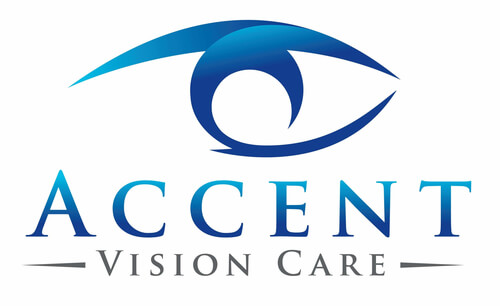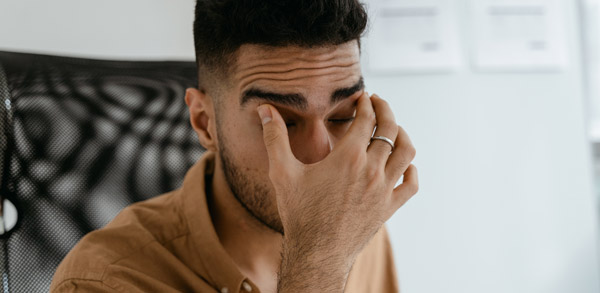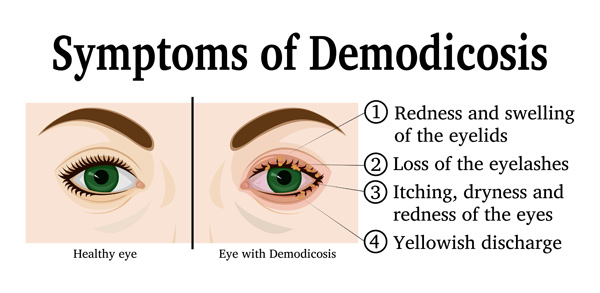Dry Eye Treatment & Diagnosis
in Gonzales, LA

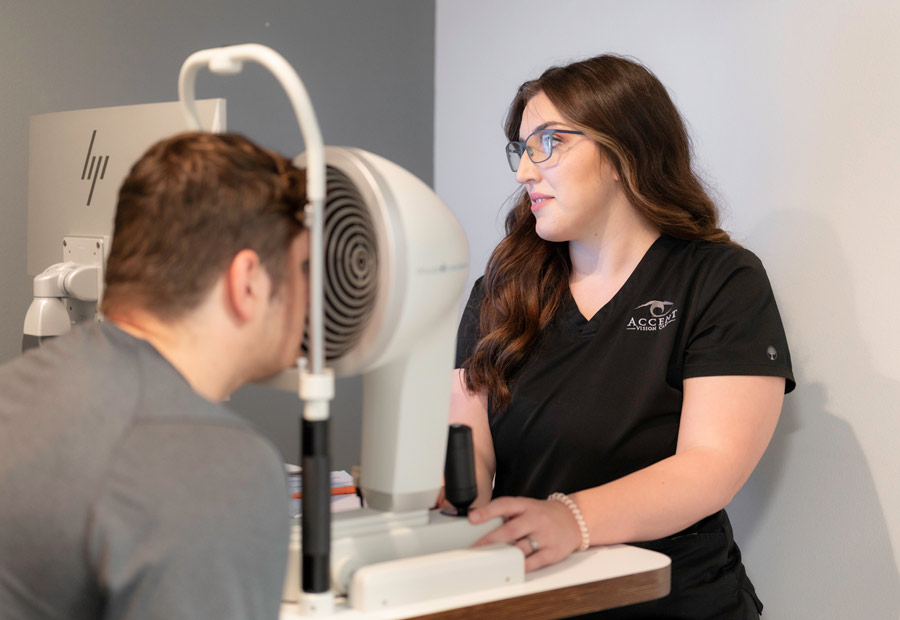
Our dry eye treatment in Gonzales, LA, are critical for properly diagnosing dry eye disease and determining the best treatment.
Dry eye syndrome is a common condition that affects many people, often without their knowledge. However, to maintain optimal eye health, it is crucial to pay attention to symptoms of dry eye and seek proper treatment when necessary. At Accent Vision Care, our doctors can diagnose dry eye syndrome and offer solutions for effective treatment tailored to your unique eye health needs.
What is dry eye?
Dry eye occurs when the eyes are unable to produce enough tears, or the tears evaporate too quickly. Dry eye typically affects both eyes, not just one, and if left untreated, this condition can increase your risk of infections. It can even damage your eye’s surface, leading to potential problems in the future. Seeking treatment for dry eye can help alleviate the symptoms, prevent complications, and improve the overall health of your eyes.

What are the symptoms of dry eye disease?
The symptoms of dry eye disease can vary but may include:
- Blurry vision
- Burning eyes
- Red or bloodshot eyes
- Itching or burning sensation in the eyes
- Sensitivity to light
- Feeling like something scratchy is stuck in your eye
- Experiencing discomfort when wearing contact lenses
- Recurring irritation that causes teary or watery eyes
- Stringy mucus surrounding your eyes
- Eye fatigue or discomfort after extended periods of reading, computer use, or other activities that require visual concentration
Symptoms of dry eye disease can range from mild to severe and can significantly impact a person’s quality of life. If you suspect you are experiencing dry eye, our qualified team of optometrists at Accent Vision Care is here to help you find solutions.
What causes dry eye disease?
There are many different reasons people can develop dry eye disease. If you’re experiencing symptoms of dry eye disease, it’s important to get a customized evaluation of the underlying causes to effectively treat it.
Meibomian gland dysfunction
Meibomian gland dysfunction (MGD) is a condition in which the meibomian glands, located in the eyelids, become clogged or blocked.
These glands produce an oily substance that helps to lubricate the eye and prevent tear evaporation. When these glands become blocked, the production of this oily substance is reduced or stopped, leading to an imbalance in the tear film and dry eye symptoms.
More about MGD
MGD is one of the top underlying causes of dry eye disease and is especially common in people who have a history of blepharitis or eyelid inflammation. Symptoms of MGD can include eye discomfort, redness, a feeling of grittiness, and a sensation of burning or stinging. In severe cases, MGD can also lead to thickened, irregular eyelid margins and meibomian cyst (chalazion) formation.
Blepharitis
Blepharitis is a condition that affects the eyelids, causing inflammation and discomfort. The condition can be caused by several factors, including bacterial infections, overgrowth of normal eyelid bacteria, or an allergic reaction. It can also be caused by a blockage in the oil glands located in the eyelids, which can lead to dry eye disease.
Inflammation from blepharitis can damage the oil glands in the eyelids, leading to a decrease in the oily layer that lubricates the eyes.
More about blepharitis
This can lead to dryness and irritation, which can then worsen blepharitis, creating a vicious cycle.
Symptoms of blepharitis typically include redness, itching, burning, and a gritty sensation in the eyes. This condition can also cause the eyelashes to stick together or turn inward, which can result in irritation and even infection. In severe cases, blepharitis can cause thickened, irregular eyelid margins and the formation of meibomian cysts (chalazia).
Demodex mites
An infestation of Demodex mites, tiny organisms found on human skin, can potentially cause blepharitis and dry eye disease. While these mites are commonly present on the skin, an overabundance on the eyelashes may lead to inflammation of the eyelids. This inflammation can result in symptoms like redness, itching, and a gritty sensation in the eyes.
Inflammation caused by a Demodex mite infestation can also damage the oil glands in the eyelids, leading to dry eye disease.
More about Demodex mites
Demodex mites are considered normal and are found on most individuals. However, an infestation can occur when the number of mites surpasses normal levels. This infestation can be caused by weakened immunity, genetic predisposition, or excessive oil production that creates an environment conducive to mite growth. A diagnosis of Demodex infestation is typically made by examining an eyelash under a microscope, which will show the presence of the mites.
Cosmetics
Cosmetics can contain ingredients that irritate the eyes, causing dryness, redness, and itching. These ingredients include preservatives, fragrances, and certain dyes. For example, eye makeup, including mascara and eyeliner, can contain ingredients that cause dryness and irritation, especially when worn for extended periods.
Cosmetics can also clog the oil glands on the eyelids and lead to the development of blepharitis, causing an overgrowth of bacteria and inflammation.
More about Cosmetics
They may also cause dry eyes by blocking the tear ducts which carry away tears from the eyes. This blockage can result in tears building up in the eyes, leading to dryness and discomfort.
Certain medical conditions
Certain medical conditions, such as rheumatoid arthritis and Sjogren’s syndrome, can lead to dry eye disease.
Medications
Certain medications, such as antihistamines and antidepressants, can also cause dry eyes as a side effect.
Environmental factors
Dry eyes can also be caused by environmental factors such as wind, sun exposure, and air conditioning.
How is dry eye diagnosed?
The first step to diagnosing dry eye is to perform a comprehensive eye exam, which our doctor will use to gain a complete understanding of your eye health. If dry eye is suspected, our doctor will also perform other tests to rule out other possible causes.
Dry eye diagnostic technology
At Accent Vision Care, we take advantage of the latest technology to accurately diagnose dry eye syndrome. Our advanced diagnostic tools include the OCULUS Keratograph® 5M with Crystal Tear Report Technology and the TearLab Osmolarity System:
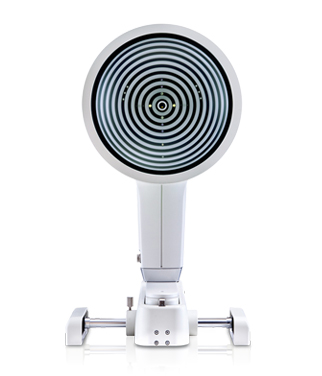
OCULUS Keratograph® 5M with Crystal Tear Report Technology
The OCULUS Keratograph® 5M is an advanced corneal topographer with a built-in keratometer and a color camera optimized for external imaging. This cutting-edge device provides us with a detailed analysis of your tear film and eye health, enabling us to create a personalized treatment plan tailored to your specific needs.
The OCULUS Keratograph® 5M is a non-invasive diagnostic tool we use to measure the quality and quantity of your tears, assess your eyelids and lashes’ health, and evaluate the stability of your tear film. The device captures high-resolution images of your eyes and produces a 3D map of the surface of your cornea. The Crystal Tear Report Technology then analyzes the data and generates a comprehensive report, providing us with a detailed understanding of your eye health.
The TearLab Osmolarity System
At Accent Vision Care, we also use the TearLab Osmolarity System to diagnose dry eye syndrome accurately. This advanced diagnostic tool is a simple and painless test that measures the osmolarity of your tears.
The TearLab Osmolarity System uses a small device to take a tiny sample of your tears and analyze it for changes in osmolarity. The osmolarity of your tears (or the salt content of your tears) is a crucial factor in determining whether you have dry eye syndrome, as the condition often causes an increase in tear osmolarity.
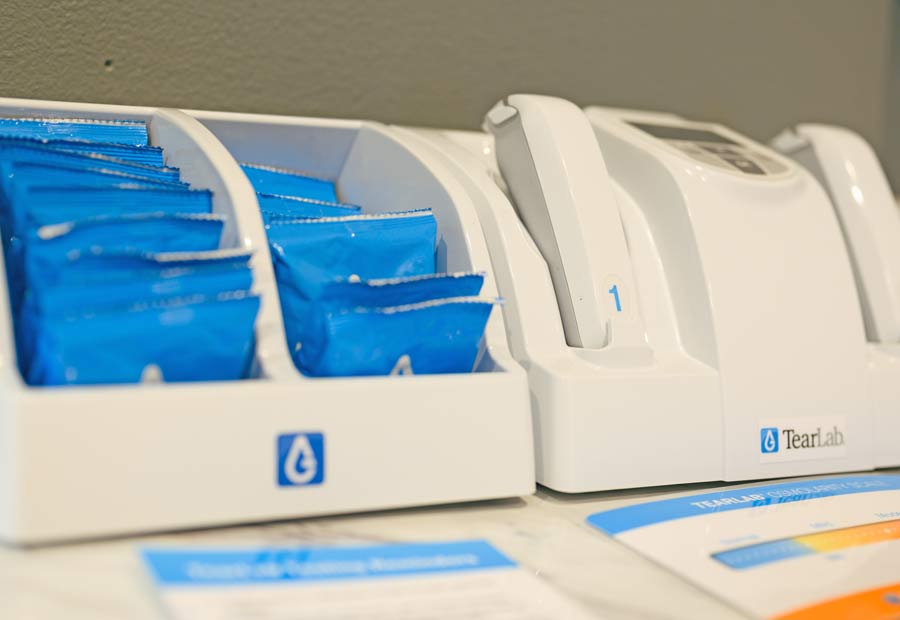
The test is quick, taking only a few seconds to produce a reading. The results are then displayed on a computer screen, allowing us to evaluate your eye health and create a customized treatment plan. By using the TearLab Osmolarity System, we can diagnose dry eye syndrome in its earliest stages, allowing us to start treatment promptly and avoid further complications.
Dry eye diagnostic tests
With the devices above, we can perform a range of tests to assess various aspects of your eyes’ health and accurately diagnose dry eye disease:
Tear meniscus height
This test determines the volume of tears distributed across the surface of your eyes after blinking. It uses an image to measure the height of the tear meniscus, which represents the amount of tears sitting physically on your eye.
Non-invasive keratograph break-up time
This test uses video-based measurement to determine how quickly your tears evaporate after you blink. The test is non-invasive and uses infrared illumination, which is not visible to the human eye, to prevent glare during the exam.
Tear film dynamic video
The tear film dynamic video is a state-of-the-art diagnostic tool we use at Accent Vision Care to evaluate the quality of your tear film. This advanced technology uses video recordings to observe the flow of your tears across the surface of your eye in real time. By analyzing the video recordings, we can draw conclusions about the thickness and stability of your tear film, as well as any debris or other issues that may be present.
Lipid layer video
We use this test to determine if the oils that sit on the top of your tear film are healthy or need treatment to get them to a healthy point.
Partial blink video
A partial blink video is a diagnostic tool we use to assess the frequency of incomplete or partial blinks. A partial blink occurs when the eyelids do not fully close during a blink, leaving a portion of the eye’s surface exposed. This can result in symptoms such as dryness, irritation, and discomfort.
Corneal and conjunctival stain with fluorescein staining
This method involves using eye drops to detect any dry spots on the front surface of your eyes.
Inferior lash and lid margins and superior lash and lid margin
This test is an image our doctor uses to assess your meibomian glands and the cleanliness of your lash bases on your top and bottom lids.
Redness scan
We take an image of your eyes to document exactly how red your eyes are. Conjunctival redness used to be assessed subjectively and depended on the examiner. The R-Scan is the first module that automatically and objectively documents and classifies the bulbar and limbal degree of redness. It detects the blood vessels in the conjunctiva and evaluates the degree of redness.
Meibomian gland imaging
This test examines the glands in your eyelids that produce the oils needed to keep the tear film from evaporating too quickly. Meibomian gland dysfunction is the most frequent cause of dry eye. This test will enable our doctor to determine if meibomian gland dysfunction is the cause of your dry eye and the severity of the dysfunction.
Once your doctor has gained a better picture of your condition, they will determine the next steps to begin treatment and help you find relief.
What are the treatment options for dry eye?
We customize our treatment plans for dry eye disease based on the underlying causes and your unique needs. Our goal is to help you maintain healthy eyes while minimizing dryness and discomfort and preventing vision loss.
Common treatments may include:
- Prescription eye drops
- Punctal plugs
- Blinking exercises or proper eyelid hygiene
- Low-dose antibiotics if an infection is causing the issue
- Lifestyle changes such as taking breaks from screens or using a humidifier
We also offer the following treatment for dry eye in our Gonzales office:
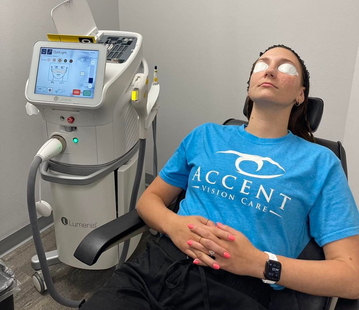
OptiLight by Lumenis
Treatment for Dry Eye Disease
Intense pulsed light (IPL) therapy has been in use by dermatologists for decades to treat rosacea, but it is also useful for treating dry eye disease.
“Optilight treatments have relieved my itchy and tired eyes and restored moisture to my sensitive eyes.”
— L. Singletary
“I love the dry eye treatment. The improvement is so great. The most obvious result is that my contacts do not dry out by the end of the day. They are no longer stuck to my eyes at night. Thanks for the great treatment and solutions to my dry eye.”
— H. Ridenour
“After a year of dry eye treatment, in office and home therapies, my vision has increased and my eyes feel healthy. I’m very happy with my results!”
— T. Hebert
“I have seen the difference after 2 treatments. I have less discomfort of my eyes and the treatment is helping. I was a little apprehensive but now I feel so much better.”
— S. O’Connor
“With every treatment I have better and better results. So glad I decided to do this.” J Gorman
— J. Gorman
“My dry eyes have progressively worsened over the last year to the point I knew I had to do something. Best decision I have ever made for my eyes was to get the IPL treatment! I have already seen success even after my second treatment!”
— L. Louque
“I was very skeptical of the treatment before starting but was desperate for some relief. The burning and itching feeling in my eyes has decreased tremendously. My eyes are not as tired by the end of the day.”
— K. Gonzales
TearCare® System
Treatment for Dry Eye Disease
TearCare® targets the meibomian glands, which are responsible for secreting the oils that help keep the eye lubricated.
TempSure Envi
Treatment for Dry Eye Disease
This advanced therapy helps restore the natural oil flow in your tear film, providing much-needed relief from dry eye symptoms
ZEST (Zocular Eyelid System Treatment)
Treatment for Dry Eye Disease
ZEST is a quick and effective 10-minute in-office procedure designed to relieve discomfort by gently exfoliating your eyelids and lashes.
Dry eye diagnosis and treatment at Accent Vision Care
Our doctors modify dry eye treatment for every patient’s specific needs with the goal of minimizing dryness and discomfort while promoting optimal eye health. If you are interested in learning more about dry eye diagnosis and treatment, contact our office in Gonzales to schedule an exam today.
